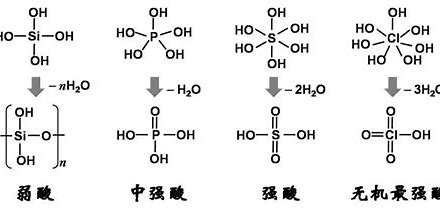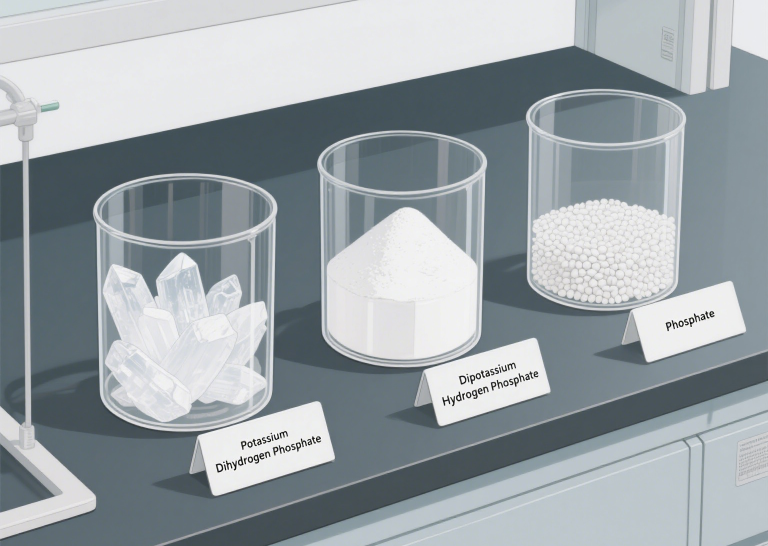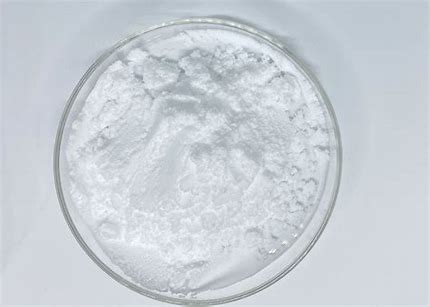Sodium Chlorate(NaClO₃)in Weed Killer: How Does It Work?
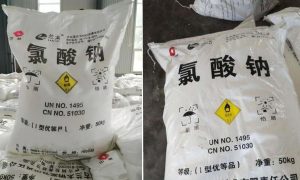
Tired of battling persistent weeds that mar your garden or landscape? Sodium chlorate (NaClO₃) is a potent chemical compound that serves as the active ingredient in many effective weed killers and herbicides. But how exactly does this seemingly simple salt eradicate unwanted vegetation? Understanding the intricate mechanism of action of sodium chlorate as a weed killer is key to wielding its power effectively and safely. This comprehensive guide will delve into the fascinating process by which sodium chlorate leads to plant death, while also highlighting crucial considerations for its responsible use.
Introduction: The Power of Sodium Chlorate as a Herbicide
For those seeking a robust solution to weed control, sodium chlorate often emerges as a powerful ally. This inorganic compound, a salt of sodium and chloric acid, is primarily utilized in agriculture and horticulture as a broad-spectrum herbicide and a defoliant, meaning it causes plants to shed their leaves. The effectiveness of sodium chlorate lies in its ability to disrupt fundamental plant processes, ultimately leading to their demise. In this article, we will unravel the science behind how sodium chlorate works to eliminate troublesome weeds.
The Mechanism of Action: How Sodium Chlorate Kills Plants
When applied to vegetation, sodium chlorate initiates a cascade of events that culminates in plant death. Its primary mode of action involves the disruption of photosynthesis, the very process that sustains plant life.
- Absorption by Plants: Sodium chlorate typically enters plants through direct contact with the foliage. When sprayed onto leaves, the chlorate ions (ClO₃⁻) are absorbed into the plant’s tissues. Root uptake can also occur, especially when applied to the soil.
- Disruption of Photosynthesis: The heart of sodium chlorate’s herbicidal action lies in its interference with photosynthesis, the process by which plants convert light energy into chemical energy in the form of sugars. This vital process occurs within chloroplasts, specialized organelles containing chlorophyll, the green pigment that captures light. Chlorate ions, once inside the plant cells, act as competitive inhibitors. They are taken up by the same transport systems that normally absorb nitrate ions (NO₃⁻), which are essential for plant growth. Once inside the chloroplasts, chlorate ions disrupt the electron transport chain, a critical step in the light-dependent reactions of photosynthesis. This blockage prevents the plant from producing the ATP and NADPH molecules necessary to convert carbon dioxide into sugars. Without this energy production, the plant essentially starves.
- Oxidative Damage: Beyond its photosynthetic disruption, sodium chlorate also functions as a potent oxidizing agent within plant cells. The accumulation of chlorate ions can trigger the production of harmful reactive oxygen species (ROS). These highly reactive molecules cause oxidative stress, damaging essential cellular components such as lipids (fats), proteins, and DNA. This widespread cellular damage further contributes to the plant’s decline and eventual death.
- Desiccation and Defoliation: Sodium chlorate’s ability to act as a defoliant is a consequence of the disruption of physiological processes and its oxidizing effects on plant tissues. The chemical can cause the plant to lose its leaves prematurely, further hindering its ability to photosynthesize and survive.
- Non-Selective Action: It’s crucial to understand that sodium chlorate is generally a non-selective herbicide. This means that it will kill or severely damage most types of vegetation it comes into contact with, including desirable plants. Therefore, careful and targeted application is essential to avoid unintended harm.
Factors Influencing the Effectiveness of Sodium Chlorate
The efficacy of sodium chlorate as a weed killer can be influenced by several factors:
- Concentration of Application: The strength or concentration of the sodium chlorate solution directly impacts its effectiveness. Higher concentrations typically lead to faster and more complete weed control.
- Plant Species and Growth Stage: Different weed species exhibit varying levels of susceptibility to sodium chlorate. Younger, actively growing plants with high metabolic rates are often more vulnerable than mature, established weeds.
- Weather Conditions: Environmental factors play a significant role. Warm, sunny conditions that promote active plant growth can enhance the absorption and translocation of sodium chlorate. Rainfall shortly after application can wash the herbicide off the foliage, reducing its effectiveness. Humidity can also influence absorption rates.
- Application Method: The method of application, whether spraying the foliage or applying granular formulations to the soil, can affect the amount of sodium chlorate absorbed by the plant.
Sodium Chlorate as a Soil Sterilant
At higher application rates, sodium chlorate can act as a soil sterilant. This means it can persist in the soil for a period, preventing the germination and growth of new vegetation in the treated area. While this can be beneficial for long-term weed control in certain situations (e.g., non-crop areas), it can also have drawbacks, potentially affecting soil health and the growth of desirable plants if the treated area is later used for cultivation.
Safety Precautions When Using Sodium Chlorate Weed Killer
While an effective herbicide, sodium chlorate poses potential hazards if not handled correctly. Strict adherence to safety precautions is paramount:
- Toxicity: Sodium chlorate can be toxic to humans and animals if ingested or if there is prolonged skin contact. Always read and meticulously follow the safety instructions and warnings on the product label.
- Handling and Application: Wear appropriate safety precautions during all stages of handling and application, including mixing the solution. This typically involves wearing chemical-resistant gloves, eye protection (goggles or face shield), and protective clothing to prevent skin contact and inhalation of dust or spray mist.
- Storage: Store sodium chlorate products in a cool, dry, and well-ventilated area, away from children, pets, and incompatible materials, especially flammable substances.
- Environmental Considerations: Use sodium chlorate responsibly to minimize potential environmental impacts. Avoid application near waterways or areas where runoff could contaminate water sources. Be aware of potential effects on non-target organisms.
- Fire Hazard: It is absolutely crucial to understand and respect the significant fire risk associated with dry sodium chlorate and its mixtures with organic materials (such as clothing, dry plant matter, or sawdust). Such mixtures can become highly flammable and even explosive under certain conditions. Avoid allowing dry sodium chlorate to come into contact with organic materials.
Conclusion: Understanding Sodium Chlorate’s Weed-Killing Power
Sodium chlorate effectively eliminates weeds by primarily disrupting their photosynthetic machinery and causing damaging oxidative stress within their cells, ultimately leading to plant death. Its non-selective nature and potential to act as a soil sterilant at higher concentrations necessitate careful and targeted application. Above all, a thorough understanding of the necessary safety precautions, particularly the fire hazard associated with dry sodium chlorate, is essential for its safe and responsible use as a powerful herbicide.
Frequently Asked Questions (FAQ)
- How long does it take for sodium chlorate to kill weeds? The timeframe can vary depending on the weed species, its size, the concentration of the solution, and weather conditions. Visible effects can often be seen within a few days to a couple of weeks.
- Is sodium chlorate a systemic herbicide? While it can be absorbed and translocated within the plant to some extent, it is primarily a contact herbicide, meaning its primary action occurs in the tissues it directly contacts.
- Can sodium chlorate contaminate soil and water? Yes, if not used responsibly. It can persist in the soil and potentially leach into groundwater. Follow label instructions carefully to minimize environmental impact.
- What are the alternatives to sodium chlorate weed killers? Various selective and non-selective herbicides with different modes of action are available, as well as non-chemical weed control methods like manual weeding, mulching, and thermal treatments.
- Is sodium chlorate legal to use in all areas? Regulations regarding the use of sodium chlorate can vary by region and jurisdiction. Always check local regulations before purchasing or using this product.
- How should I dispose of unused sodium chlorate weed killer? Never pour it down the drain or into waterways. Follow the disposal instructions on the product label or contact your local hazardous waste disposal facility for guidance.
Composition and Structure
Sodium bisulfite and sodium chlorate differ significantly in their chemical composition and structure. Sodium bisulfite is an inorganic sodium salt, appearing as a white crystalline powder. It consists of sodium (Na), hydrogen (H), sulfur (S), and oxygen (O) atoms, forming the compound NaHSO₃.
This structure allows it to function effectively as a preservative and reducing agent. In contrast, sodium chlorate has the chemical formula NaClO₃. It comprises sodium (Na), chlorine (Cl), and oxygen (O) atoms.
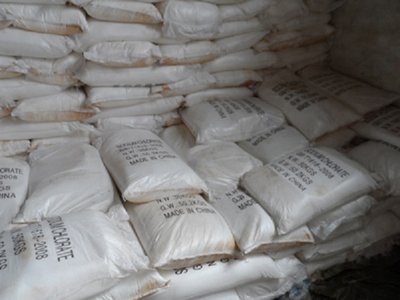
Understanding sodium bisulfite specifications is crucial for its effective use across industries. Users should select sodium bisulfite based on its purity and adherence to standards. Proper handling and storage ensure its efficacy and safety.
Industries must store it in well-ventilated areas, away from incompatible substances. Recognizing the differences between sodium bisulfite and sodium chlorate aids informed decision-making. Sodium bisulfite acts as a reducing agent, while sodium chlorate serves as an oxidizing agent. This knowledge helps users choose the right chemical for their specific needs, ensuring optimal results and safety.
yuhan Sodium Chlorate:https://www.yuhanchemi.com/sodium-chlorate
We support product customization Specific specifications, grades, reagents, price comparison is welcome
Contact us:https://www.yuhanchemi.com/contact


